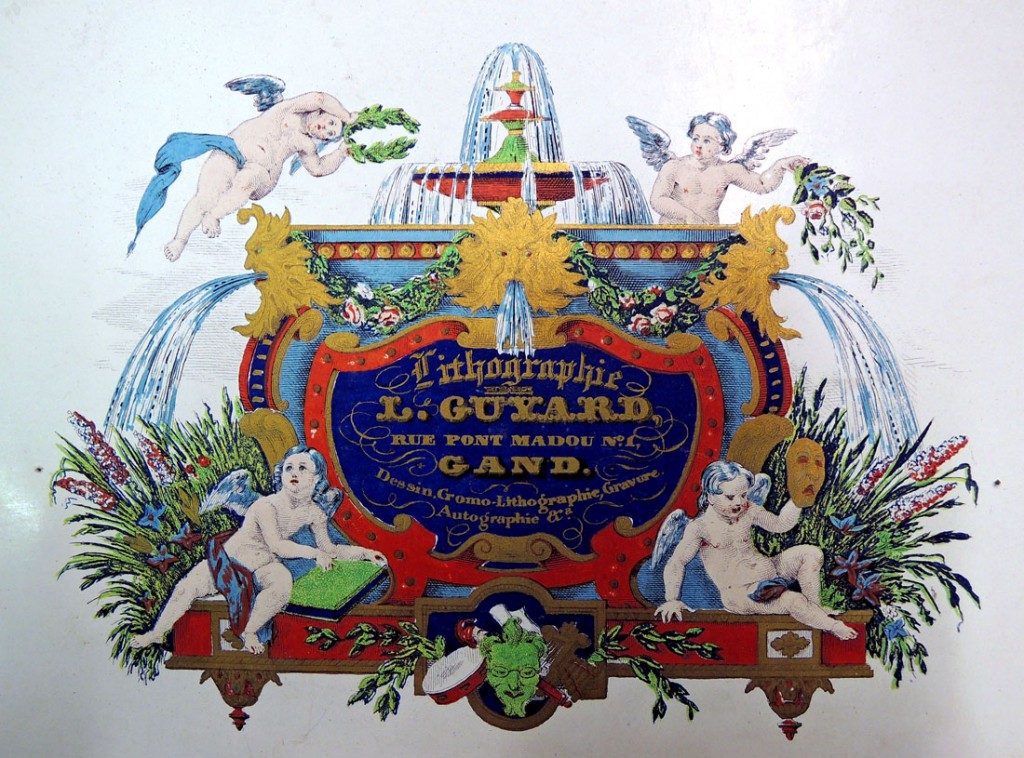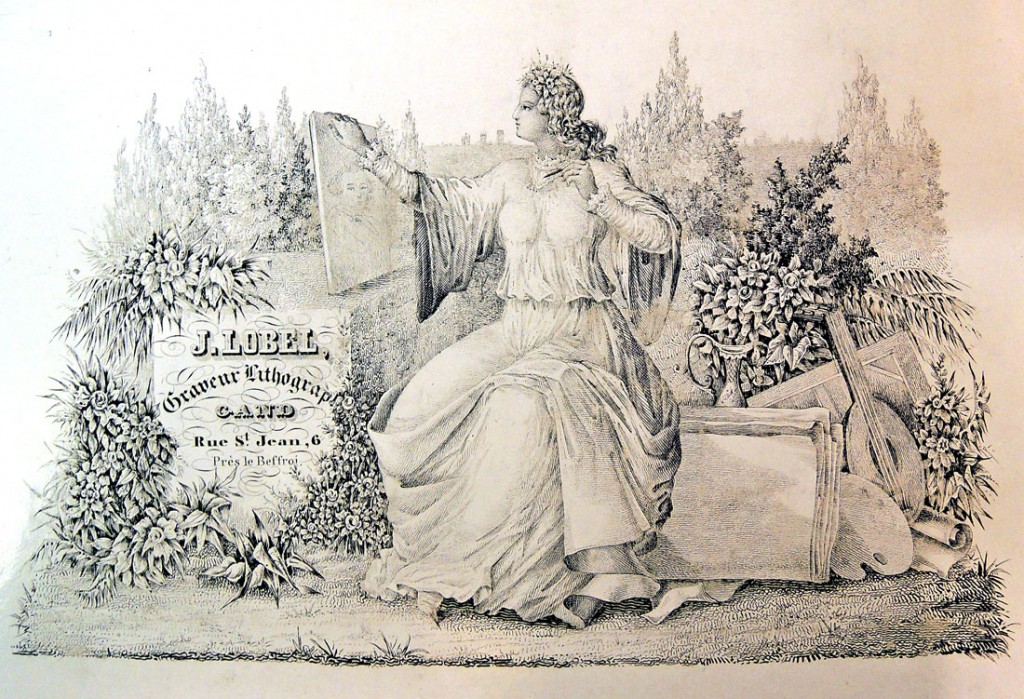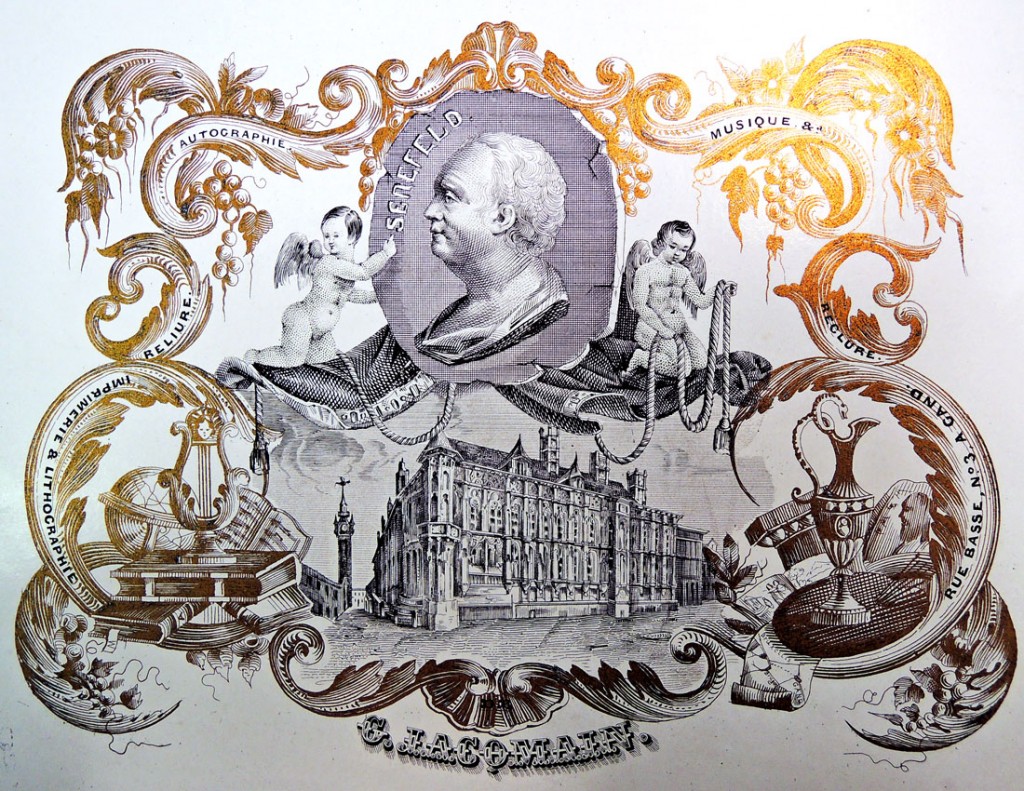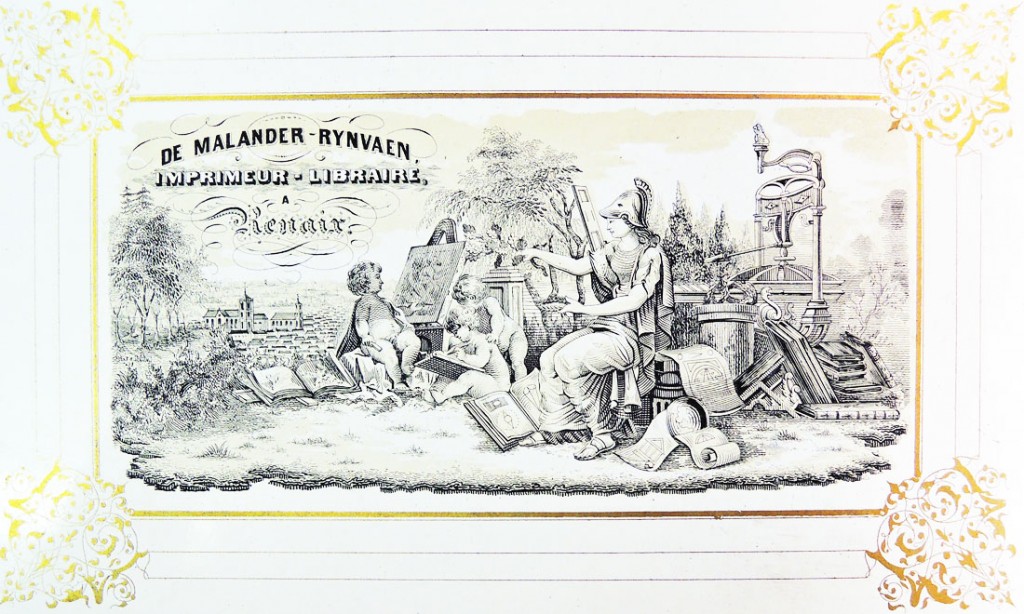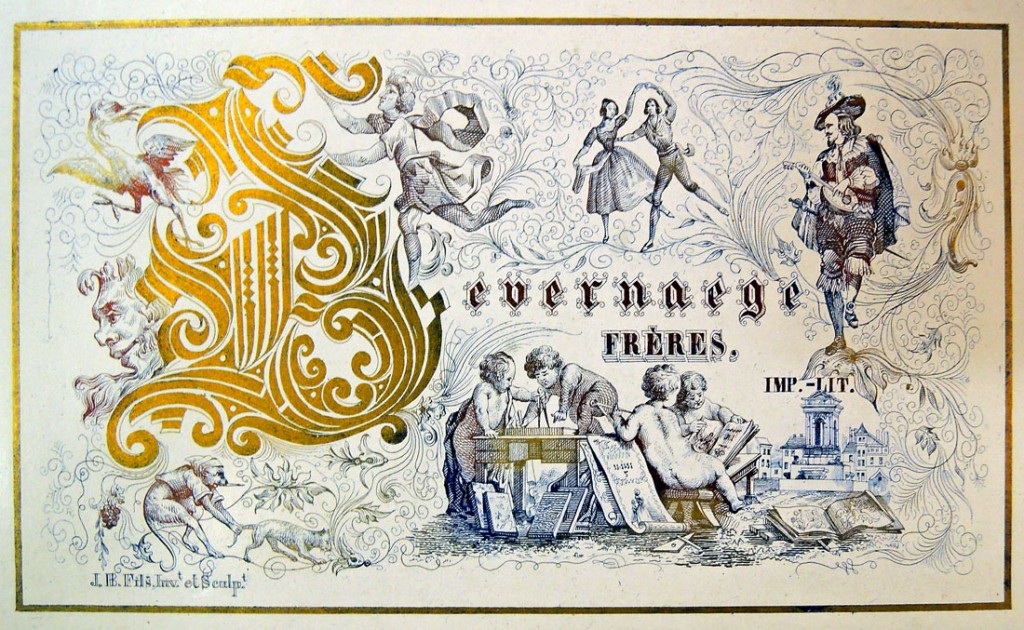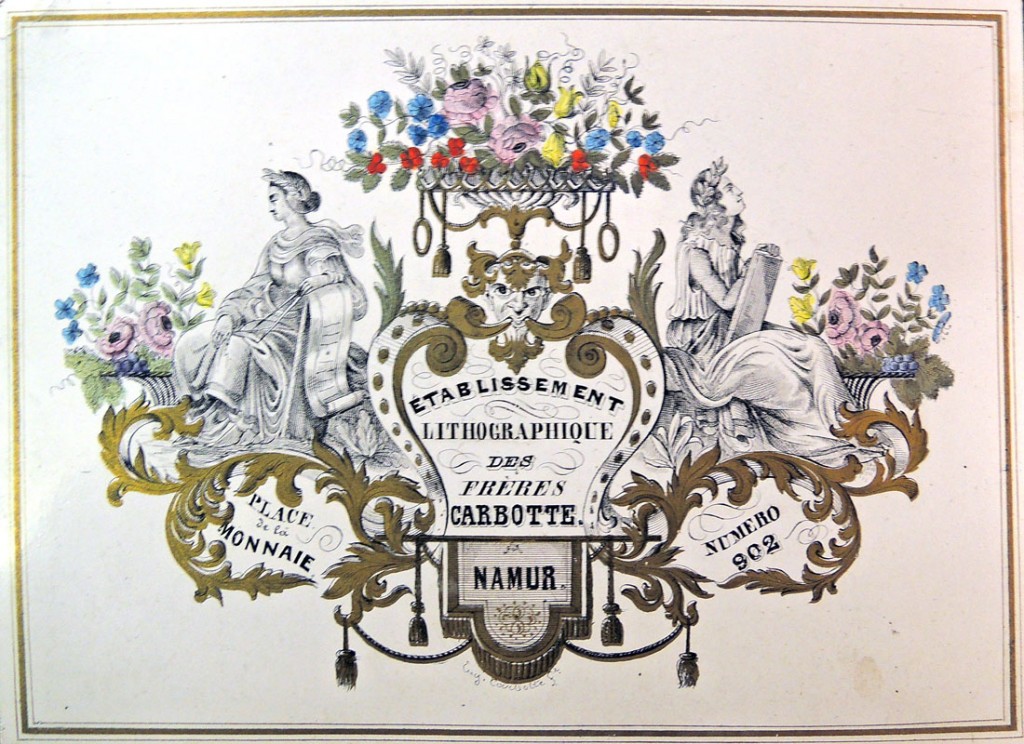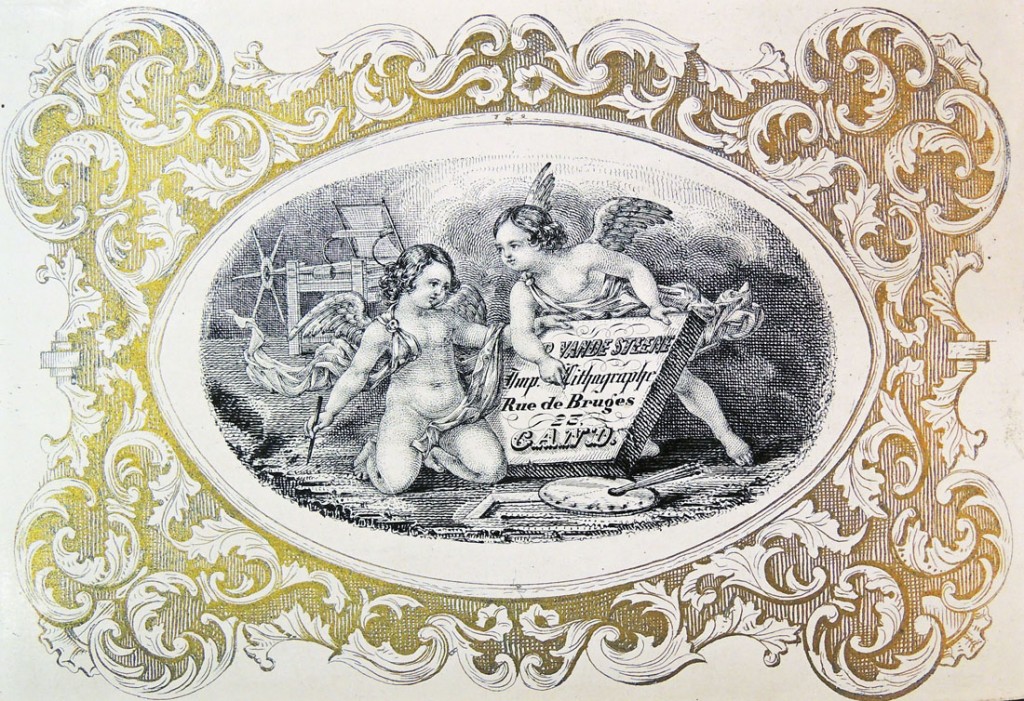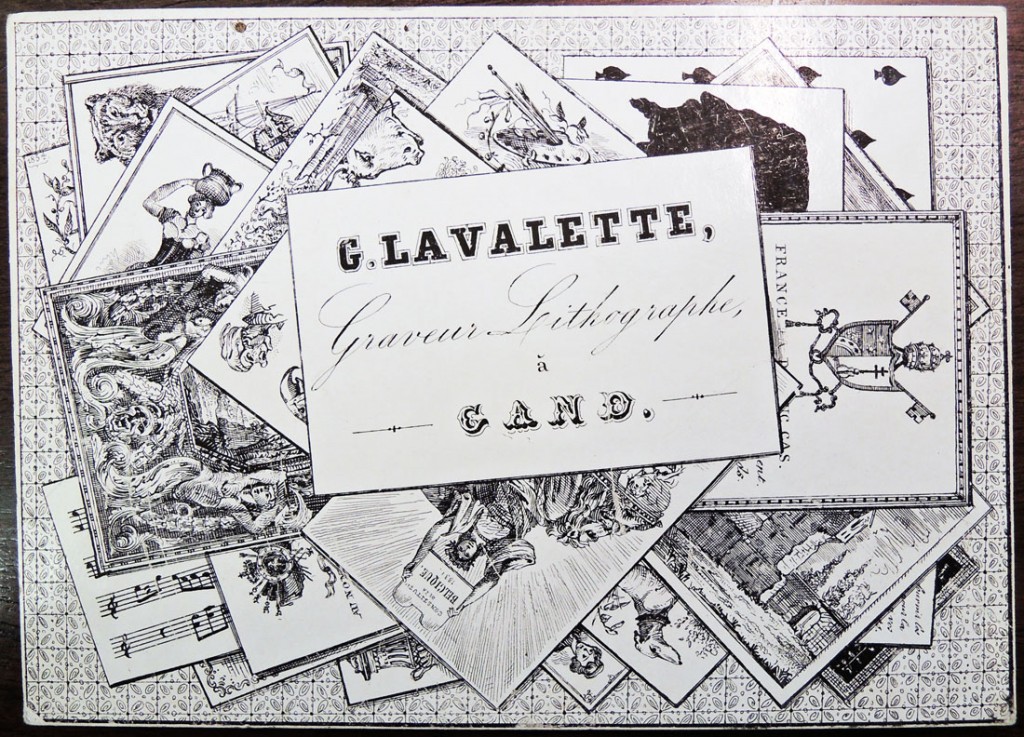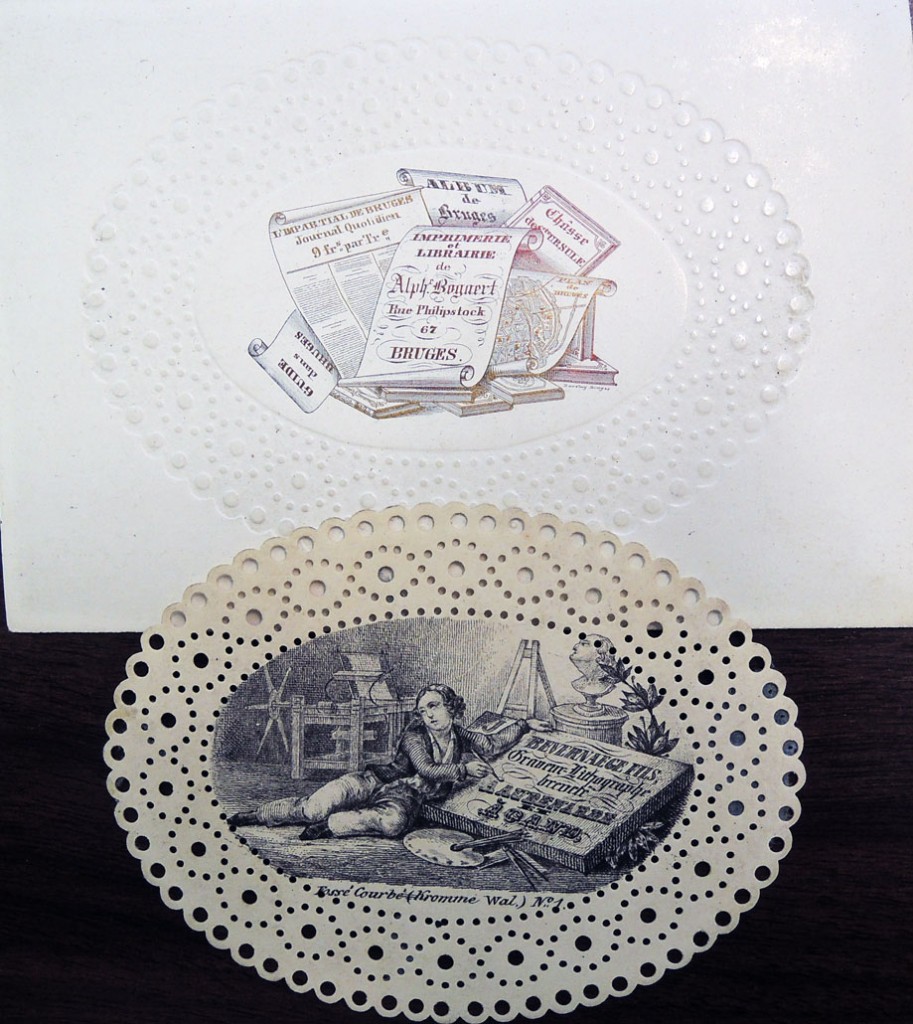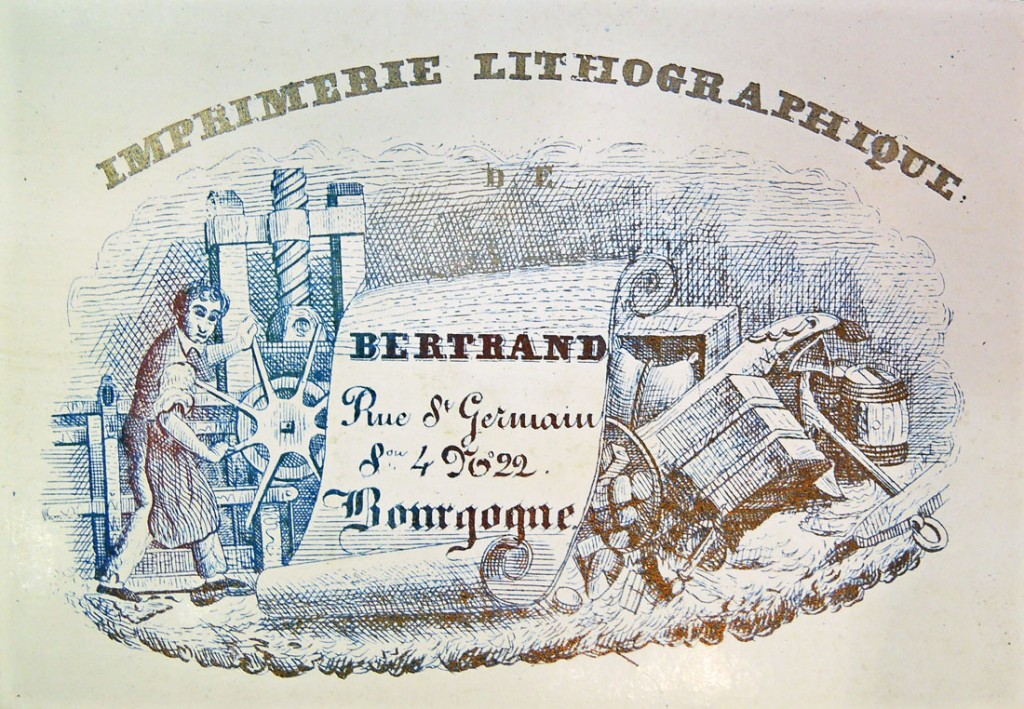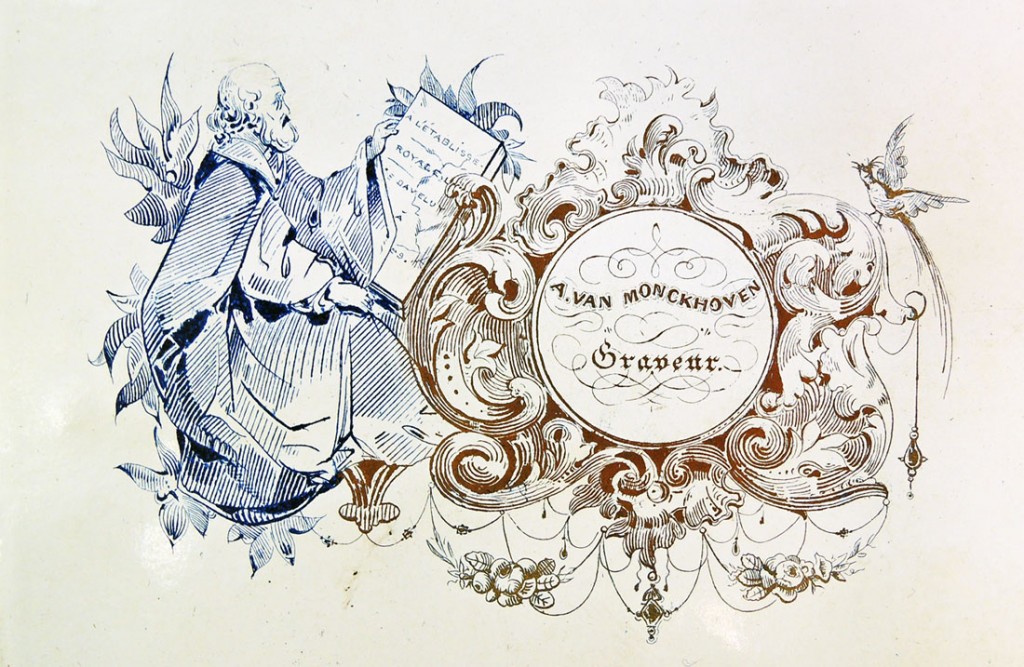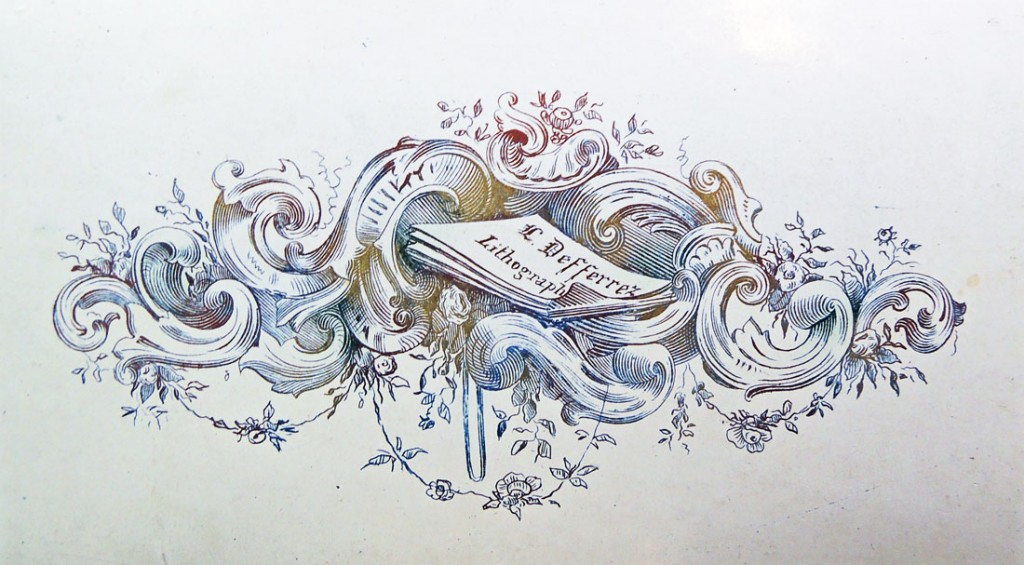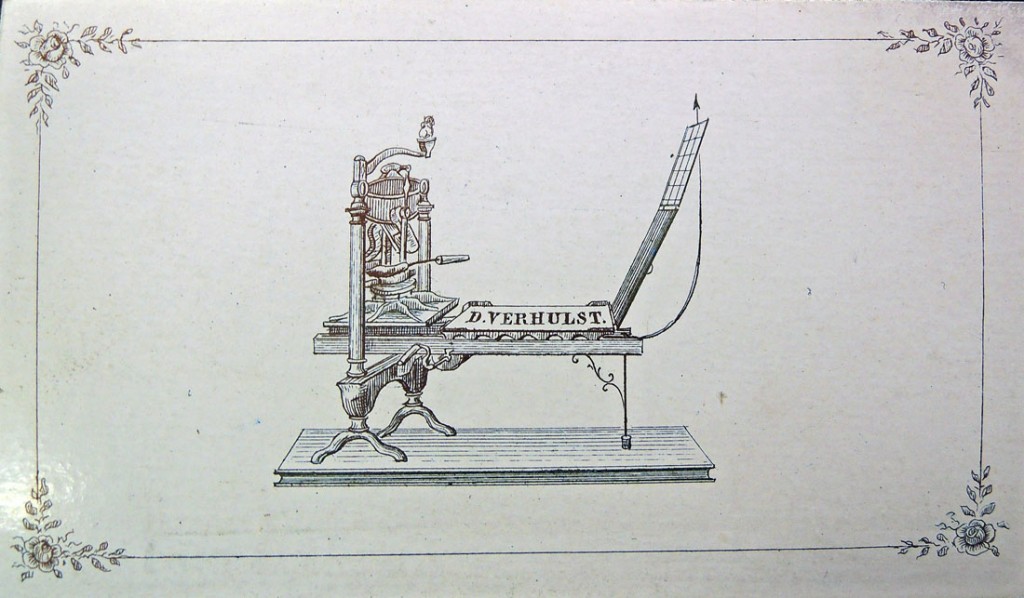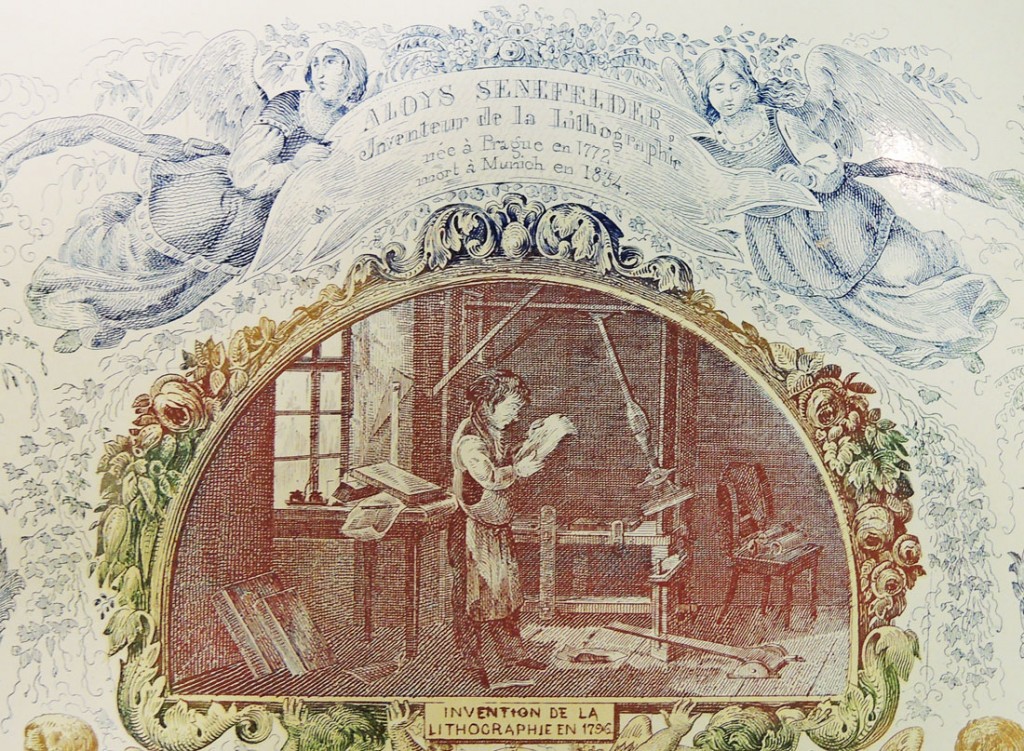
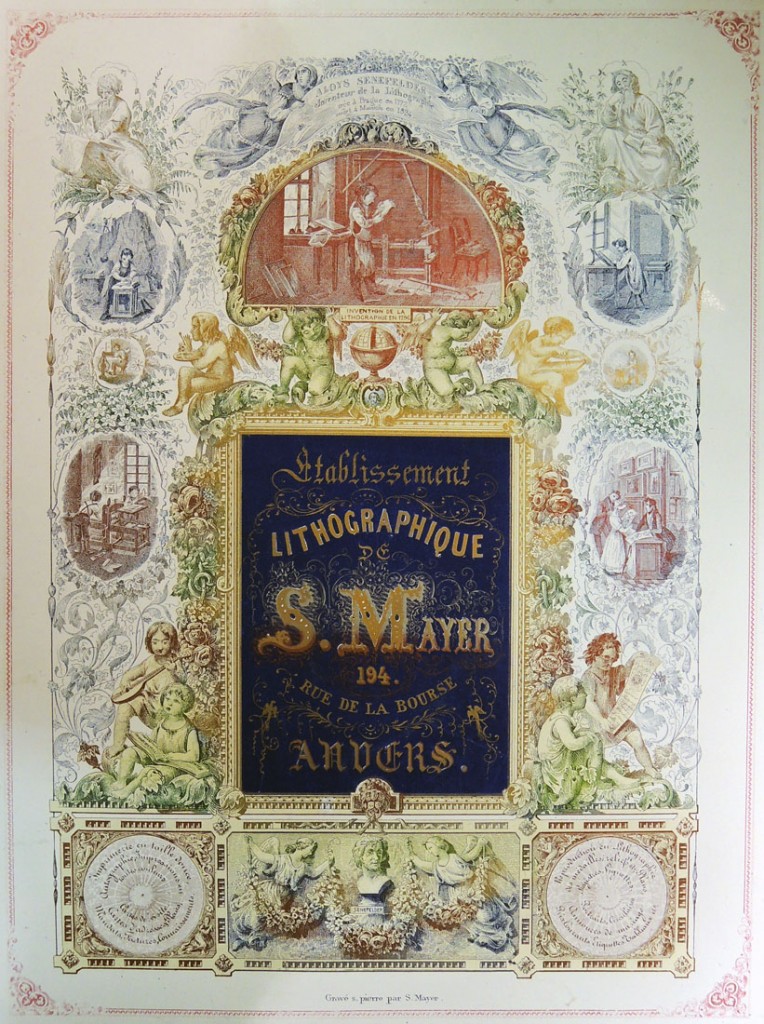
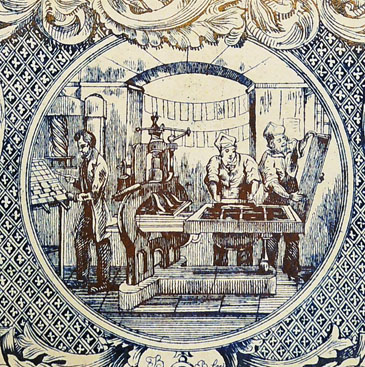 Artist and collector W. Allen Scheuch II, Class of 1976, spent many years tracking and acquiring cartes porcelaine or trade cards made in Belgium between 1840 and 1860. The collection numbers in the thousands and is divided into professions; genres such as menus or holiday cards; inking and coloring variants; and many other categories useful for researchers. These cards are now available in the graphic arts collection at Princeton, in honor of Ben Primer. I am posting a few the Belgian chromolithographic printers made to publicize themselves.
Artist and collector W. Allen Scheuch II, Class of 1976, spent many years tracking and acquiring cartes porcelaine or trade cards made in Belgium between 1840 and 1860. The collection numbers in the thousands and is divided into professions; genres such as menus or holiday cards; inking and coloring variants; and many other categories useful for researchers. These cards are now available in the graphic arts collection at Princeton, in honor of Ben Primer. I am posting a few the Belgian chromolithographic printers made to publicize themselves.

“Most surviving trade cards produced by chromolithographers in the years leading up to the middle of the nineteenth century are Belgian,” writes Michael Twyman. “They belong to a broader category of lithographed product generally referred to in Belgium and France as ‘cartes porcelaine’ (enameled cards). Their common feature is that they were printed on card that had been coated with white lead (otherwise known as ceruse or carbonate of lead); the substance was similar to the lead paint used by artists and was often referred to in France as Clichy white. Card with this white lead coating was subject to pressure from steel cylinders at the final stage of manufacture, which gave it a sheen and also ensured a perfectly smooth printing surface. This provided lithographic printers with an opportunity to produce extremely intricate work, which they did by turning to the process of engraving on stone.”
A History of Chromolithography, p. 422. GARF NE2500.T8 2013

